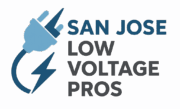What Are the Risks of Low Voltage?
Introduction
Many people assume that low voltage means low risk. After all, if high-voltage power lines are deadly, then household wiring or low-voltage circuits should be harmless, right? Unfortunately, that’s not true. While classified as “low” by electrical standards, low voltage can still pose significant risks to people, equipment, and infrastructure if not properly managed.
In this guide, we’ll break down the risks associated with low voltage, explore the technical and safety implications, and provide actionable insights to help homeowners, businesses, and technicians stay safe.
If you’re experiencing low voltage issues, trust San Jose Low Voltage Pros to provide safe and reliable solutions
Table of Contents
- Understanding Low Voltage
- Health and Safety Risks of Low Voltage
- Technical and Operational Risks
- Fire Hazards and Electrical Damage
- Risks in Different Settings
- Common Misconceptions About Low Voltage
- Prevention and Safety Measures
- Future Outlook: Managing Low Voltage in Smart Systems
- Conclusion
- FAQs
Understanding Low Voltage
Before exploring the risks, it’s important to understand what qualifies as low voltage (LV).
According to the International Electrotechnical Commission (IEC 60038):
- Low voltage: 50 to 1,000 volts AC or 120 to 1,500 volts DC
- Extra-low voltage (ELV): Below 50V AC or 120V DC
This means that household electricity (120V or 240V) is considered “low voltage,” but it can still be lethal under certain conditions.
Health and Safety Risks of Low Voltage
Low voltage exposure may not sound dangerous, but it can still harm the human body:
- Electric Shock: Even currents as low as 30 mA (at 120V) can cause respiratory paralysis or cardiac arrest.
- Burns: Contact with energized parts can lead to thermal burns or tissue damage.
- Muscle Contractions: Low voltage shocks may cause involuntary muscle spasms, making it difficult to let go of energized equipment.
- Secondary Injuries: People may fall or injure themselves when startled by a low-voltage shock.
👉 According to OSHA, contact with household voltages (120V/240V) is a leading cause of workplace electrical injuries.
Technical and Operational Risks
Low voltage doesn’t just affect people—it can also cause serious technical issues:
- Equipment Malfunction: Low voltage can cause motors to overheat, lights to flicker, and sensitive electronics to fail.
- System Inefficiency: Prolonged undervoltage reduces equipment performance and lifespan.
- Voltage Drop Issues: In large buildings or industrial setups, insufficient voltage supply can cause downtime and revenue loss.
- Data Corruption: Low voltage fluctuations in IT or telecom systems can result in data loss or communication breakdowns.
To fully understand the risks, it’s also important to know whether low voltage is AC or DC, since the type of current can affect how it behaves.
Fire Hazards and Electrical Damage
One of the most overlooked risks of low voltage is its potential to start fires:
- Overheated Wires: Undervoltage forces equipment to draw more current, heating up wires and insulation.
- Short Circuits: Damaged low-voltage cables can spark and ignite combustible materials.
- Battery and DC Systems: Low-voltage DC systems, such as solar panels or EV batteries, can still arc and create fire hazards.
📊 According to the National Fire Protection Association (NFPA), electrical distribution equipment—including low-voltage circuits—is a leading cause of residential fires in the U.S.
Risks in Different Settings
Low voltage hazards differ depending on the environment:
1. Residential
- Faulty wiring can cause fires.
- Poorly installed low-voltage lighting or doorbells may still shock users.
2. Commercial Buildings
- Low voltage in HVAC or IT systems can lead to costly downtime.
- Security and alarm systems may fail during undervoltage conditions.
3. Industrial Facilities
- Motors running on low voltage may overheat and fail.
- Improper grounding in LV systems increases arc flash risks.
4. Outdoor and Construction
- Wet environments increase the risk of shock, even at lower voltages.
- Temporary LV setups may be poorly protected from the elements.
Common Misconceptions About Low Voltage
- “Low voltage can’t kill you.” → False. Household electricity (120V) can be fatal depending on current path and duration.
- “Only high-voltage equipment causes fires.” → False. Overloaded low-voltage circuits are a major cause of residential fires.
- “Extra-low voltage is always safe.” → False. Even ELV systems (like 12V batteries) can spark, burn, or cause injuries in certain conditions.
Prevention and Safety Measures
To reduce risks associated with low voltage:
- Use protective devices: Install Ground Fault Circuit Interrupters (GFCIs) and surge protectors.
- Follow NEC & OSHA guidelines: Ensure compliance with wiring and safety codes.
- Maintain proper grounding: Critical for both safety and performance.
- Schedule regular inspections: Identify voltage drop or wiring issues before they escalate.
- Train staff and homeowners: Basic awareness can prevent accidents.
Future Outlook: Managing Low Voltage in Smart Systems
As smart homes, renewable energy, and electric vehicles grow, low voltage risks will evolve:
- IoT devices increase dependency on low-voltage circuits.
- Solar PV and battery storage rely heavily on ELV and LV systems.
- Hybrid AC/DC grids may create new risks if not properly regulated.
Future safety standards will likely focus on integrated monitoring and AI-powered predictive maintenance to minimize risks.
Some may wonder whether low voltage is truly dangerous or just inconvenient. Our guide on whether low voltage is a problem dives deeper into this question.
Conclusion
Low voltage doesn’t mean low danger. From electric shock risks to equipment failures and fire hazards, understanding and respecting the risks of low voltage is essential.
By following safety standards, using protective devices, and staying informed, homeowners, businesses, and technicians can reduce risks and ensure reliable, safe electrical systems.
